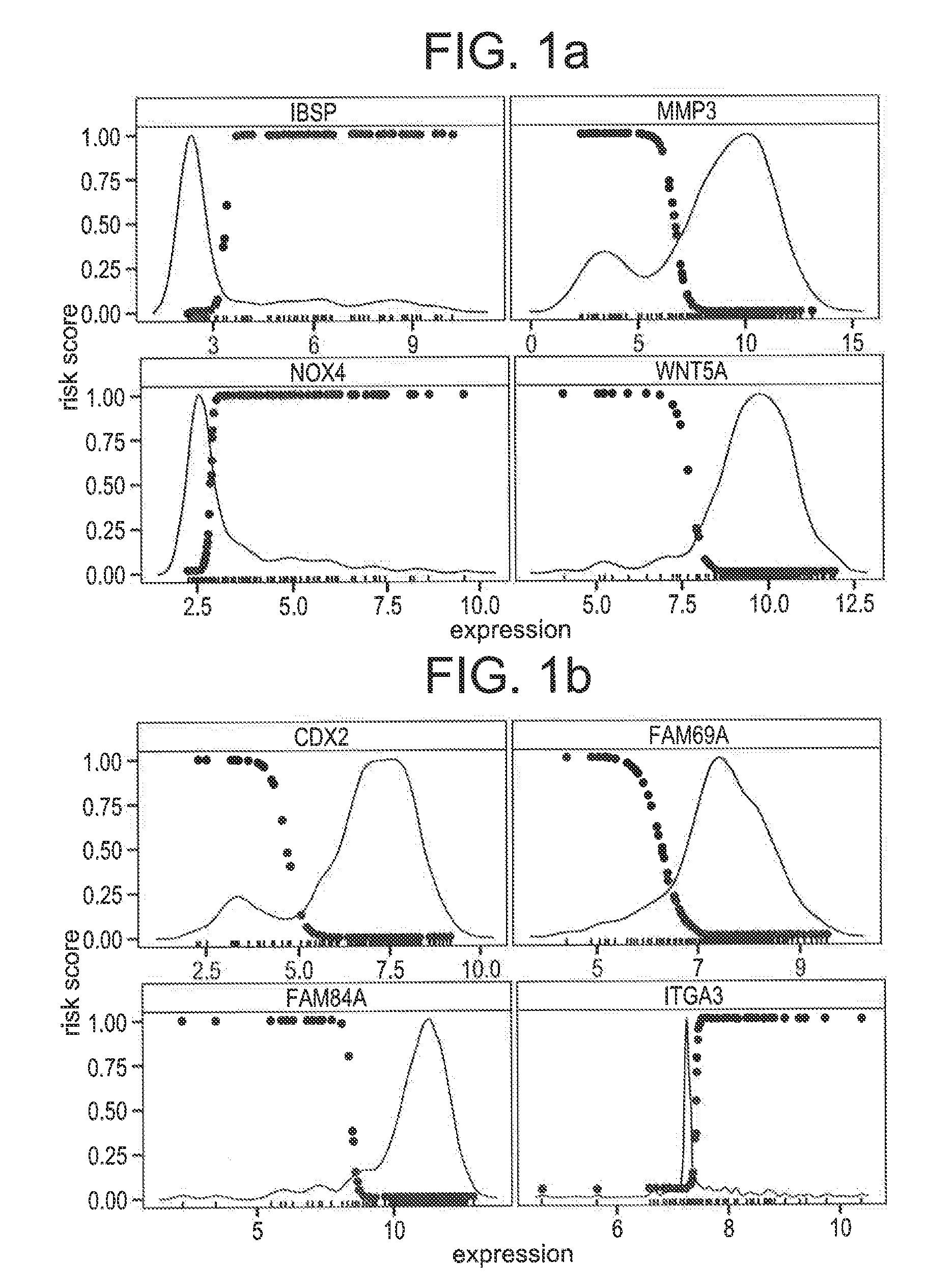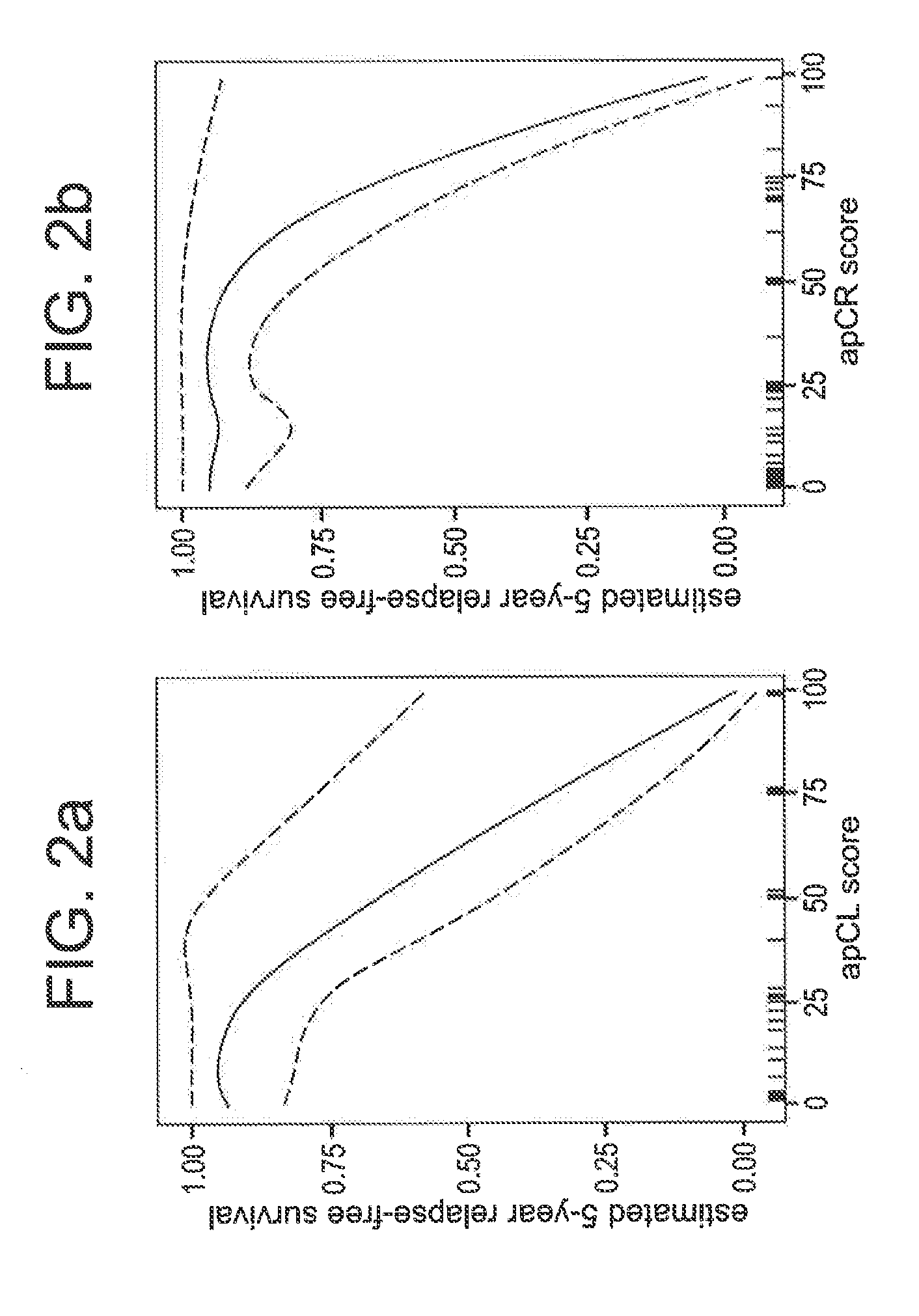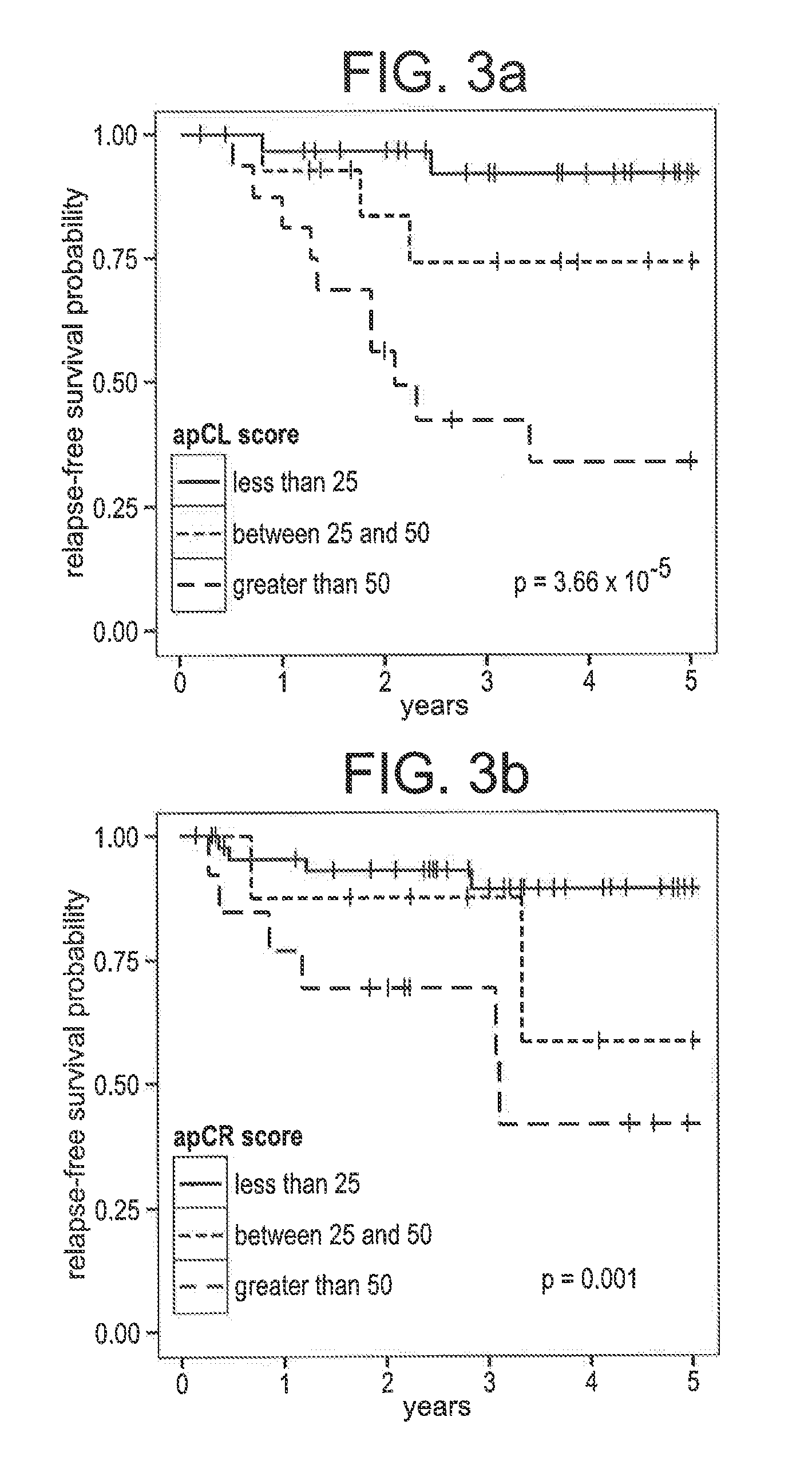Stratification of left-side and right-side colon cancer
a colon cancer and stratification technology, applied in the direction of microorganism testing/measurement, biochemistry apparatus and processes, instruments, etc., can solve the problems of ineffectiveness, few mechanisms of help for healthcare professionals, and inability to support randomized controlled trials routine use of adjuvant chemotherapy
- Summary
- Abstract
- Description
- Claims
- Application Information
AI Technical Summary
Problems solved by technology
Method used
Image
Examples
example 1
Materials and Methods
[0103]Scoring functions are developed from the expression levels of few genes, separately for left-side and right-side colon cancer, that stratify patients by risk of relapse. Microarray data from 102 right-side colon carcinomas and 95 left-side colon carcinomas are used to select the genes used in our prognostic scores. Formalin-fixed and paraffin-embedded (FFPE) samples from an independent set of 44 stage II right-side colon carcinomas and 39 stage II left-side colon carcinomas are used to validate the tests, following translation of the tests to FFPE tissue and real-time polymerase chain reaction (RT-PCR) with representative cell lines.
Microarray Data Set Used as the Discovery Set / Microarray Techniques for RCC and LCC Prognostic Tests
[0104]The microarray data set used as the discovery set was published in [10] and is publicly available on the Gene Expression Omnibus as GSE14333. The data were generated with AFFYMETRIX array hgul33plus2. The characteristics of...
example 2
Measurement of mRNA in FFPE Colon Cancer Tissue
[0112]The present example demonstrates the utility of the present invention for providing a tool and method useful in the assessment of risk of colon cancer relapse using an FFPE tissue sample from a colon cancer patient.
[0113]Common practice in clinical pathology is to preserve a solid tumor tissue sample in formalin and fix it in paraffin, this tissue sample being referred to as an FFPE tissue specimen. This FFPE tissue specimen is examined under a microscope in the process of establishing the tumor state and it is readily available for staining with protein antibodies or analysis of DNA. Translating a genomic prognostic test developed with microarrays and a fresh-frozen tissue sample, to one that uses FFPE tissue, faces several difficulties. One of these difficulties is that fixing tissue in formalin is known to degrade some species of mRNA. Thus, if two samples recovered from the same tissue block, one frozen and one prepared as an ...
example 3
Construction of Multigene Survival Models with a Panel of Multistate Genes
[0119]An array probe (gene) is called multistate if the probe's expression values naturally divide samples into two distinct subtypes. For a multistate probe p there is a threshold c, determined by statistical methods, such that the samples with expression values above c, denoted p+, forms the high expression component, and the samples with expression values below c, denoted p−, form the low expression component. Many genes have nearly normal expression distributions, hence are not considered multistate. The formal definition of a multistate gene is found in [9].
[0120]In the multistate genes correlated with relapse, one of the components is highly enriched with relapse cases. In prior work, the principle that a multistate probe represents distinct states was exploited, the expression vector for a multistate probe is replaced by a binary variable in which all samples in the poor prognosis component are given th...
PUM
| Property | Measurement | Unit |
|---|---|---|
| temperature | aaaaa | aaaaa |
| pH | aaaaa | aaaaa |
| pH | aaaaa | aaaaa |
Abstract
Description
Claims
Application Information
 Login to View More
Login to View More - R&D
- Intellectual Property
- Life Sciences
- Materials
- Tech Scout
- Unparalleled Data Quality
- Higher Quality Content
- 60% Fewer Hallucinations
Browse by: Latest US Patents, China's latest patents, Technical Efficacy Thesaurus, Application Domain, Technology Topic, Popular Technical Reports.
© 2025 PatSnap. All rights reserved.Legal|Privacy policy|Modern Slavery Act Transparency Statement|Sitemap|About US| Contact US: help@patsnap.com



